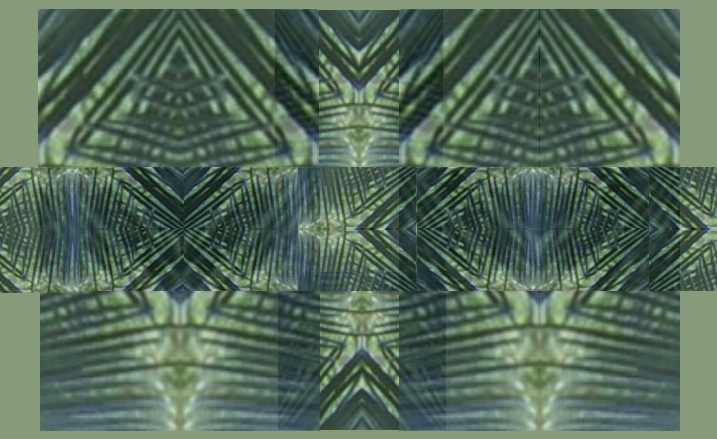Jung’s essay on synchronicities is centered around the notion of causality: he points out certain phenomena that (according to him) cannot be causally explained, and in general he claims that the law of causality is insufficient as a principle for scientific explanation. These sound like far-reaching statements. But of course, how far-reaching they really are (and whether they are have any substance and truth to them) depends on what Jung means by ‘causal’ and the law of causality.
What does he actually mean by those terms?

1. This is a real question. Consider that the notion of causality is practically an ancient term. For more than two thousand years, philosophers have formulated and re-formulated that idea, and worked out accounts of why and how causality can have explanatory power, whether it is in conflict with the exercise of free will, and other questions. Such discussion has gained a new focus over the past few centuries with the emergence of modern science, and it has been a central point in discussions of the theoretical basis of knowledge (think Hume and Kant). In the 20th century, this discussion has naturally expanded to the social sciences.
Even from that quick review, it should be clear that ‘the’ notion of causality does not exist. As long as we work inside a narrowly defined area (physics, say, or jurispudence), we might get away with simply taking for granted whatever notion is used in that field. But if we widen the discussion (as Jung does) to include practically the entire history of mankind, and not just narrowly science but generally all kinds of inquiry, there is no way we can talk about causation as if it were a simple, obvious, and unified term. We have to explain what we mean by that.
2. Since Jung nowhere does so in the synchronicities essay (at least not explicitly), we have to infer his meaning from his use of the term.
We might venture a hypothesis: since Jung himself mentions recent developments in physics at various critical points in his essay, perhaps the notion of causality which he has in mind is that which features in those discussions among physicists, in particular in relation with the theory of relativity and quantum mechanics?
The immediate trouble is of course that, again, this does not pick out a single notion of causality. For there is no such thing as ‘the’ notion of causality even in modern physics. (Just compare what Einstein say with what Heisenberg says…)
To pin one down, perhaps the most promising guess can be derived from a suggestion Pauli makes in a letter to Jung. Since he rightly sees ‘causality’ as too varied in meaning, he recommends to stick to the notion of determinism: “Für den Physiker haben die Worte ‘kausal’ und ‘Kausalität’ eine viel weniger feststehende Bedeutung als das Wort ‘Determinismus’. Speziell verstehen unter ‘akausal’ verschiedene Autoren nicht dasselbe.” PJB 42.)
We do not know whether Jung agreed. Perhaps not: he certainly continued to use the terminology of causality (rather than using that of determinism). Still, his understanding of causality may have sharpened as a result of suggestions like this one of Pauli’s. Again: we’ll never know; but as a working hypothesis, suppose it had, and Jung’s notion of causality is basically that of Pauli’s, i.e. one of causal determinism.
3. First of all let us note that ‘causality’ and ‘determinism’ really are two different notions. Determinism is not the same as causality. There have been, in fact, determinisms in the history of philosophy which are not causal (plainly: theological determinisms); and as is well known, one may hold a view that includes the law of causality in a way that leaves it compatible with a non-deterministic position allowing for free will; views of that type are called ‘compatibilist’.
Thus when Pauli states his view as causal determinism, he picks out a substantial position. In one of his published papers on the foundations of physics he explicitly defines it as follows:
From a knowledge of a certain number of physical functions of state (which may be continous functions of position in space) at an instant of time t = t0, knowledge which can, in principle, achieved with arbitrarily high accuracy by measurements, the values of these functions of state at another (later or earlier) instance t = t1 can be calculated, and thereby the results of all other possible measurements at t = t1 may be accurately predicted.
Pauli, Writings on Physics and Philosophy, 97.
The careful wording with respect to measurement has mostly to do with Pauli’s goal of comparing such a notion of determinism with the ideas of quantum physics, and we can leave that aside for the moment. Apart from that, the basic thought is this: classical physics understands causal determinism in terms of objects in space whose position changes with time; and given full knowledge of positions of objects at one time, we can calculate their positions at any other time, because they can only move in space and time by fully determined laws: namely, when other objects exert a force on them, that event causes them to change their positions, and the resulting situation is its effect.
4. It is important to understand how restricted this notion really is. It certainly does not cover, just by itself, many things we usually mean when we use the parlance of cause and effect.
Just take a simple example: when someone dies, a doctor usually ascertains the “cause of death”. This is not done for purposes of physiological research of course. It is done because it has legal consequences: for example, if the death has occurred for suspicious reasons, there is need for further investigation by the police. So in this case we have a cause that can be stated in physiological terms, and an effect that can only be stated in terms of society, the law, and so on. Clearly, that requires a much wider notion of ‘causality’ than the determinism in Pauli’s quote. The latter is restricted to the domain investigated by physics: the movement of objects in space and time. That is a very wide domain, of course (it covers the movement of the planets just as well as the electromagnetism that makes mobile phones work). In one sense, it covers ‘everything’, i.e. everything physical in time and space. But it does not cover everything in every sense: there are many other domains, including legal and social domains, which are not included under that description.
Of course, one can have a view in which ‘everything’ (that is: all domains, including the legal and social ones we just saw as an example) can in the end be reduced to descriptions in terms of physical laws. (Such positions are variously called ‘reductionism’, ‘physicalism’, etc.) But that is not simple and obvious (nor uncontroversial), and there needs to be some good reasoning towards that claim.
In general, most would view a notion such as Pauli’s simply as a very specialized tool used in one of the sciences (physics), and distinguish it from broader notions of cause and effect used in everyday talk and (more importantly) in other disciplines which tackle different domains. And from that point of view, such claims as “Not everything can be causally explained.” are trivial. They merely state the obvious: that a specialized notion from one area of science cannot simply be generalized for other uses elsewhere.
5. Now what about Jung?
In the synchronicities essay, there are a few remarks where he seems, at least at the surface, to operate with a notion like Pauli’s determinism (§§ 829, 855), whereas in other passages his use of the term ‘causality’ is much more sweeping (and vague). It seems a good idea to start with the former, and then test out the results with the latter.



